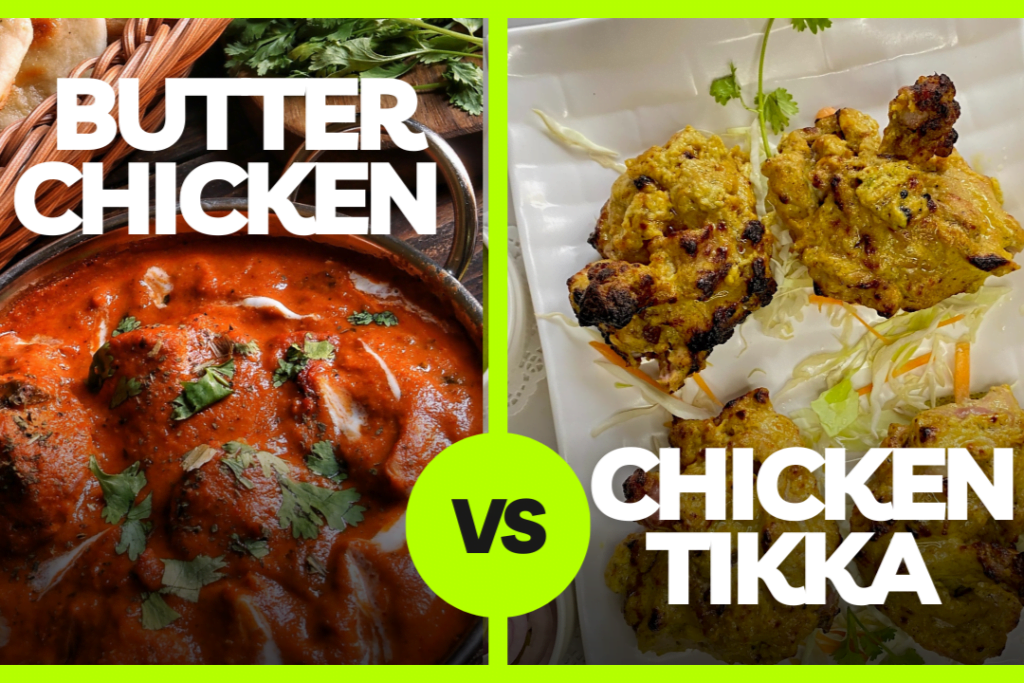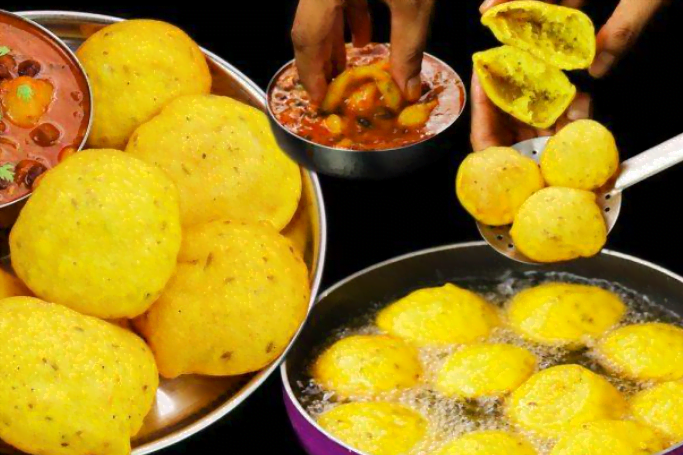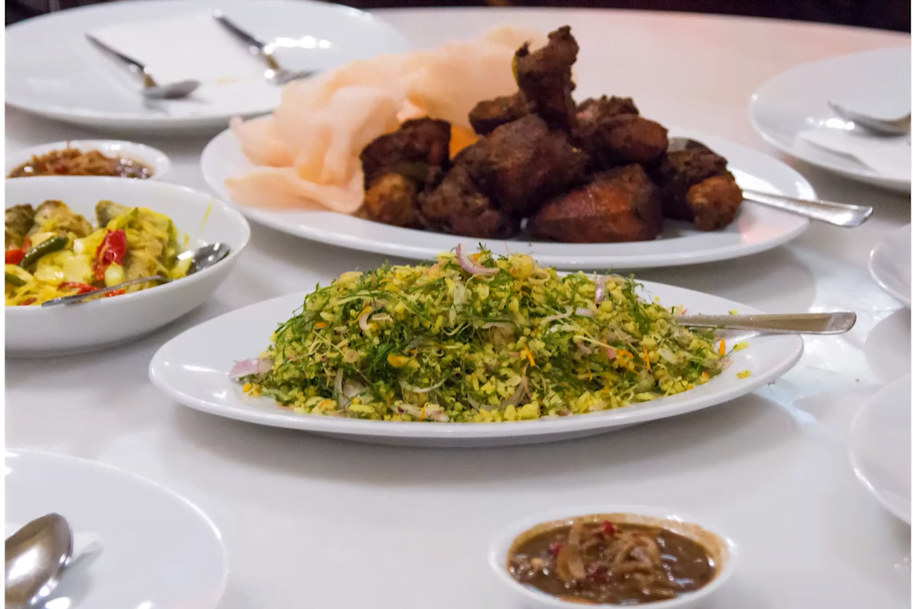Indian food is known for its renowned dishes like Chicken Tikka Masala and Butter Chicken, each of which has its own special charm. The smoky, hotter tastes of Chicken Tikka Masala are produced by grilling marinated chicken and mixing it with a thick masala sauce with a tomato base. In contrast, Butter Chicken features tender chicken simmered in a buttery, tomato-based gravy for a creamy, milder flavor. Both dishes are decadent and well-liked everywhere. Personal preference will ultimately determine which one you choose; those who prefer stronger flavors may choose Tikka Masala, while those looking for a silky, comfortable meal may lean toward Butter Chicken. In either case, these meals provide a delectable tour of the rich, varied world of Indian cuisine.
As we compare Chicken Tikka Masala and Butter Chicken, two legendary dishes from India that have won the hearts and palates of food lovers worldwide, we set out on an epic adventure through the vibrant world of Indian cuisine. These two recipes appear similar, yet they each have unique flavours and cooking methods that set them apart as treasured classics in their own right.
Chicken Tikka Masala:
United Kingdom-born Chicken Tikka Masala is frequently referred to as the country’s national cuisine and has gained international fame. Chicken that has been marinated and grilled with a thick, spicy sauce is combined in this creamy, tomato-based curry. Let’s explore the essential elements that contribute to its excellent flavour:
Marinade:
Chicken chunks that have been marinated in a mixture of yoghurt and flavorful spices including cumin, coriander, garam masala, turmeric, and chilli powder form the basis of Chicken Tikka Masala. This marinade helps keep the chicken soft when grilling and enriches it with a rich taste.
Grilling:
To give the marinated chicken a smokey, charred flavour, it is often roasted in a tandoor (clay oven). But an oven or grill can be used to prepare it in contemporary kitchens.
Masala Sauce:
The heart and soul of Chicken Tikka Masala is the silky sauce. Tomatoes, cream, butter, and a variety of spices, including fenugreek, cinnamon, and cardamom, are harmoniously combined. The sauce and the grilled chicken work together to create a divine harmony of tastes.
Butter Chicken:
India-born Butter Chicken, commonly referred to as Murgh Makhani, is a North Indian speciality that features opulent, buttery gravy with tender chicken pieces. Why it has become legendary is as follows:
Marination:
Unlike Chicken Tikka Masala, Butter Chicken marinates the chicken in a unique spice mixture, yoghurt, and lemon juice. While the lemon juice gives the dish a tart touch, the yoghurt helps to tenderize the chicken.
Cooking Technique:
The chicken is customarily roasted in a tandoor for this meal, giving it a delicious charred texture. However, the chicken can also be prepared in a regular oven, much like Chicken Tikka Masala.
Tomato Cream Gravy:
The distinctive feature of Butter Chicken is the delicious tomato-based gravy. Butter, cream, tomatoes, and a variety of spices, including cumin, cinnamon, cloves, and cardamom, are all rich ingredients in the sauce. The marinated chicken and the creamy texture combine to create a taste explosion.
Flavour Comparison between Chicken Tikka Masala and Butter Chicken :
Both meals share several components, including tomatoes, cream, and various spices. Although they are cooked using similar methods, they taste remarkably different because of the differing marination process:
- Tandoor-grilled chicken and a potent spice blend give Chicken Tikka Masala a smokier and somewhat hotter flavour profile.
- On the other side, butter chicken has a creamier and milder flavour, where the butter and cream soften the impact of the spices for a more decadent experience.
Frequently Asked Questions About Wingstop Ranch –
which is better chicken tikka masala or butter chicken?
I should make it clear that the idea that one meal is “better” than another is purely subjective and dependent on individual taste preferences. Both Butter Chicken and Chicken Tikka Masala are incredibly well-liked and well-known meals, each having its distinctive flavours and qualities.
Tandoor-grilled chicken and a potent spice blend give Chicken Tikka Masala its smoky, hotter flavour character. The richness of the butter and cream complement the marinated chicken in Butter Chicken, which has a creamier and milder flavour.
While some people might choose the hearty and creamy flavour of Butter Chicken, others might favour the potent and smokey undertones of Chicken Tikka Masala. Individual taste preferences, dietary constraints, and cultural influences are the deciding factors in everything.
The “better” option ultimately comes down to what you find more palatable. If you can, sample both dishes and then make your judgment about which one you like. Indian food is varied and rich, with a wide range of flavours to experience and enjoy. Take advantage of the chance to sample these culinary treats and find your particular favourite.
Is chicken tikka masala or butter chicken healthier
It’s important to take into account the ingredients and cooking techniques employed in each meal when contrasting the nutritional value of Chicken Tikka Masala with Butter Chicken.
Chicken Tikka Masala:
While this dish can be tasty and filling, the milk and butter that are used to make the masala sauce make it richer and higher in calories. Yoghurt is also frequently added during the marinating process to add calories and a creamy mouthfeel. Additionally, the dish could include the fats and oils used to grill or fry the chicken.
Butter Chicken:
Similar to other dishes, Butter Chicken has a rich and creamy texture thanks to the use of milk, butter, and occasionally ghee (clarified butter). It may have more calories and saturated fats as a result of these additives.
If eaten in moderation, both foods can be a component of a diet that is balanced. However, there are several alternatives you might want to take into account if you’re seeking a healthier option.
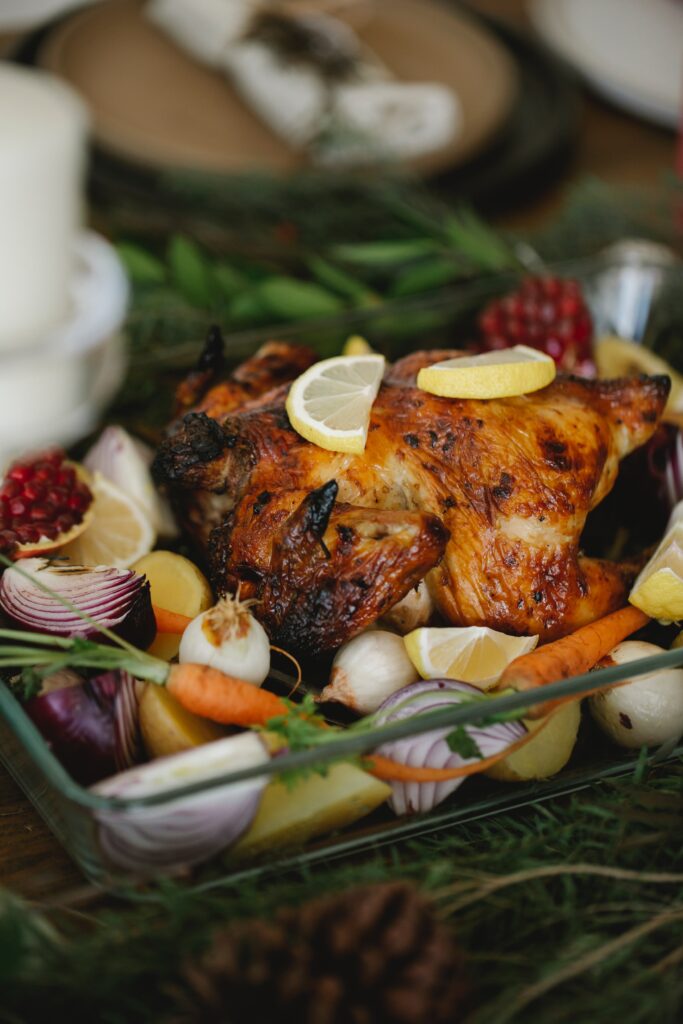
Chicken tikka masala vs Butter chicken Nutrition:
Depending on the precise ingredients and preparation techniques used in each dish, the nutritional value of Chicken Tikka Masala and Butter Chicken can change. Based on typical serving sizes, the nutrition for each dish is summarized as follows:
Tandoori Chicken:
Calories: One cup of food has between 300 and 400 calories per serving.
Protein: Depending on how much chicken is used, 25 to 30 grams.
Fat: The amount of fat can be between 15 and 25 grams, with the majority coming from milk, butter, and cooking oils.
Carbohydrates: Usually has between 15 and 20 grams, mostly from tomatoes, onions, and marinade.
Fibre: The average serving size contains 1 to 2 grams of fibre.
Vitamins and minerals: The sauce’s spices and veggies supply essential nutrients such as vitamin C, vitamin A, iron, and calcium.
Butter Chicken:
Calories: One cup of food contains roughly 400–500 calories.
Protein: Chicken and dairy products provide between 25 and 30 grams of protein.
Fat: Because butter, cream, and occasionally ghee are used, the fat level may be higher, ranging from 20 to 30 grams.
Carbohydrates: Usually contains between 15 and 20 grams of carbohydrates from ingredients like tomatoes, onions, and other things.
Fibre: Similar to Chicken Tikka Masala, Butter Chicken typically has 1 to 2 grams of fibre per dish.
Vitamins and minerals: The spices and other components provide some essential nutrients like vitamin C, vitamin A, calcium, and iron.
Both meals can be sources of protein, but due to the use of cream, butter, and other fatty ingredients, they are rather heavy in calories and saturated fats. Use thinner chicken parts, use less cream and butter, and add more veggies to the sauces to improve the nutritional value of these recipes.
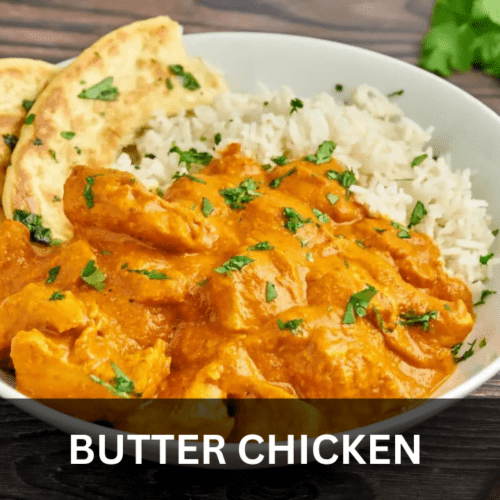
Butter Chicken
One of the most adored Indian meals is without a doubt butter chicken, with its velvety texture and mouthwatering flavours. This dish may be modified to suit your tastes, whether you enjoy spicy cuisine or prefer milder flavours. Each bite is a joy because to the flavorful blend of delicate chicken, rich tomato sauce, and fragrant spices. So don your aprons, grab your supplies, and try making this delicious butter chicken dish. Your palate will appreciate it!
Prep Time 30 minutes mins
Cook Time 20 minutes mins
Total Time 1 hour hr 30 minutes mins
Course Main Course
Cuisine American, French, Indian
Servings 4 people
Calories 397 kcal
Equipment
- Mixing Bowls
- Baking sheet or oven-safe dish (optional)
- Large pan or skillet
- Wooden spoon or spatula
- Cutting board and knife:
- Oven (optional)
- Serving dish
- Optional Use a blender or food processor to mix the tomato puree or sauce if you like a smoother consistency.
Ingredients
For the marinade:
- 500 grams boneless chicken, cut into bite-sized pieces
- 1 cup plain yogurt
- 1 tablespoon ginger-garlic paste
- 1 teaspoon red chili powder
- 1 teaspoon turmeric powder
- 1 teaspoon garam masala
- 1 tablespoon lemon juice
- Salt to taste
For the sauce:
- 3 tablespoon butter
- 1 tablespoon oil
- 2 medium-sized onions, finely chopped
- 2 teaspoon ginger-garlic paste
- 2 teaspoon red chili powder
- 1 teaspoon turmeric powder
- 2 teaspoon garam masala
- 1 teaspoon dried fenugreek leaves (kasuri methi)
- 1 cup tomato puree
- 1/2 cup heavy cream
- Salt to taste
- Fresh cilantro leaves for garnishing
Instructions
Marinating the chicken:
- Yoghurt, ginger-garlic paste, turmeric, red chilli powder, garam masala, lemon juice, and salt should all be combined in a mixing bowl.
- Make sure the chicken is uniformly covered with the marinade before adding the chicken pieces.
- To enable the flavours to permeate the chicken, cover the bowl and place it in the refrigerator for at least two hours.
Cooking the chicken:
- Set the oven's temperature to 400°F (200°C).
- Bake the marinated chicken for 15 to 20 minutes, or until it is well done. As an alternative, you may pan-fry or grill the chicken on the hob until it turns golden brown.
- As you make the sauce, set the cooked chicken aside.
Preparing the sauce:
- Melt the butter and oil in a large pan over medium heat.
- Add the chopped onions and cook them for a few minutes until golden brown.
- Red chilli powder, turmeric powder, garam masala, and ginger-garlic paste should be added. To allow the flavours of the spices to come out, stir well and simmer for two to three minutes.
- Add the tomato puree, stirring regularly, and simmer for an additional five minutes.
- Cooked chicken pieces may be added to the pan and combined with the sauce.
- Heavy cream should then be added and carefully combined. For the flavours to combine, simmer it for 10 to 15 minutes on low heat.
- Add the kasuri methi (dried fenugreek leaves) to the sauce and whisk once more. To taste, add salt to the dish.
Serving:
- Put the butter chicken on a serving platter.
- Add fresh cilantro leaves as a garnish for an extra punch of flavour.
- Serve hot with roti, basmati rice, or naan bread. These sides go wonderfully with the creamy, savoury sauce.
Video
Notes
Tips for Making Butter Chicken:
- Marinate the chicken: Give the chicken enough time to marinate in the yogurt and spices before serving. This contributes to flavor improvement and chicken tenderization.
- Adjust spice levels: Depending on your taste, butter chicken's heat level can be adjusted from mild to hot. Depending on your preferences, adjust the amount of red chili powder and other spices.
- Use high-quality components: For the finest flavor, use ingredients that are both fresh and of high caliber. For the tomato puree, use ripe tomatoes and high-quality seasonings.
- Cook the chicken properly: Make sure the chicken is well cooked before incorporating it into the sauce. Undercooking can put food safety at risk, while overcooking can make chicken dry.
- Simmer for flavors to meld: Allow the butter chicken to simmer on low heat for a while after adding the cream to allow the flavors to marry. This increases the sauce's richness and aids in the blending of the flavors.
Precautions while Making Butter Chicken:
- Cross-contamination: To prevent cross-contamination, follow the proper food safety procedures. After working with raw chicken, thoroughly wash your hands, cutting boards, and utensils.
- Adjust spice levels cautiously: If you're not used to hot food, be cautious when adjusting the spice levels. Be cautious when incorporating red chili powder or other spicy foods. Add a little at a time and taste as you go to avoid making the food too hot for you.
- Handling hot pans and ovens: Use caution while using the oven or working with hot utensils. Cover your hands with oven mitts or kitchen towels to prevent burns.
- Allergies and dietary restrictions: Take note of any dietary restrictions or allergies you may have, as well as those of your visitors. For those who are lactose intolerant, you may adjust the recipe by using lactose-free cream or any acceptable dairy product alternative.
- Storage and reheating: If you have leftovers, fully cool them down and store them in the refrigerator in sealed containers. Before eating, fully reheat the chicken, making sure it reaches a safe internal temperature.
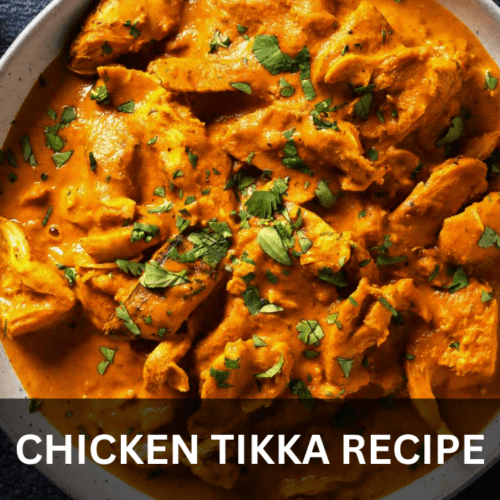
CHICKEN TIKKA
A delicious Indian meal called chicken tikka shows the bright flavours of traditional spices. This dish gives a pleasant sensory experience with its delicate chicken, tangy yoghurt marinade, and smokey charred edges. Chicken Tikka will wow whether you're hosting a dinner party or are just in the mood for a tasty supper. So grab your ingredients, follow the following instructions, and set out on a gastronomic tour across India. Let your taste senses dance with delight as you savour the tantalising flavours of Chicken Tikka!
Prep Time 10 minutes mins
Cook Time 30 minutes mins
Refrigeration time 3 hours hrs
Total Time 3 hours hrs 30 minutes mins
Course Breakfast, Main Course
Cuisine Indian
Servings 4 people
Calories 200 kcal
Equipment
- Mixing bowl
- Skewers
- Grill or Oven
- Brush or Tongs
- Knife and cutting board
- Measuring spoons
- Serving Platter
- Optional Lemon squeezers and citrus juicers: If you prefer utilising fresh lemon juice, these might make the process of extracting the juice simpler.
Ingredients
- 500 grams boneless chicken, cut into bite-sized pieces
- 1 cup plain yogurt
- 2 tablespoons lemon juice
- 2 tablespoons ginger-garlic paste
- 2 teaspoons red chili powder
- 1 teaspoons turmeric powder
- 1 teaspoons ground cumin
- 1 teaspoons ground coriander
- 1 teaspoons garam masala
- 1 teaspoons } paprika
- Salt to taste
- 2 tablespoons vegetable oil
- Fresh cilantro leaves (for garnish)
- Lemon wedges (for serving)
Instructions
Marination Process:
- Combine the yoghurt, lemon juice, ginger-garlic paste, turmeric powder, cumin, coriander, garam masala, paprika, and salt in a large mixing bowl.
- Until the marinade is smooth, thoroughly combine the ingredients.
- Chicken pieces should be uniformly coated with the marinade after being added.
- Allow the flavours to permeate the chicken by covering the bowl and chilling it for at least two to three hours.
Cooking Process:
- Set the temperature of your oven or grill to medium-high.
- Set the grill to medium-high heat before using it. Set your oven to 425°F (220°C) if you're using one.
- Place the marinated chicken pieces on skewers, spacing them apart slightly.
- To avoid sticking, lightly oil a baking sheet or the grill grates.
- Cook the chicken skewers on the grill or baking sheet for 10 to 12 minutes, turning them over once or twice, or until the chicken is well cooked and the edges are just beginning to sear.
- Place the baking sheet on the centre shelf of the oven and bake for 15 to 20 minutes, or until the chicken is well done.
- After it has finished cooking, take the chicken tikka out of the grill or oven and let it to cool.
- Serve hot with lemon wedges and garnish with fresh cilantro leaves.
Serving Suggestions:
- Basmati rice or warm naan bread should be served with the chicken tikka.
- Add a refreshing mint yoghurt sauce or sour tamarind chutney to go with it.
- For a light contrast, serve with a side of fresh salad or pickled onions.
- It goes well with a mango lassi or other cool Indian beverage.
Video
Notes
Tips and Precautions for Making Chicken Tikka:
- Select chicken of a high calibre: For the finest flavour and texture, choose boneless, fresh chicken pieces. Before marinating, make sure the chicken has been well-washed and trimmed.
- Marinate for an adequate amount of time: The chicken should be marinated for at least 2-3 hours (or overnight) to allow the flavours to permeate and the flesh to become soft. The flavour of the Chicken Tikka will increase with the amount of marinating time.
- Use Greek yoghurt or hung curd: Since they have a thicker consistency and provide a creamier texture, Greek yoghurt or hung curd work well for the marinade. To eliminate extra moisture when using ordinary yoghurt, drain it for a few hours with cheesecloth.
- Adjust spice levels to your preference: The amount of spices listed in the recipe is a rough guideline; you should adjust it to your personal desire. To fit your personal taste preferences, feel free to change the spice levels. Chilli powder and other spices can be added or subtracted in accordance.
- Soak wooden skewers: Wooden skewers should be soaked for around 30 minutes if you plan to use them before threading the chicken. As a result, the skewers won’t burn when being grilled.
- Preheat the grill or oven: Before cooking the Chicken Tikka, make sure that your grill or oven is prepared to the correct temperature. As a result, the chicken cooks more evenly and doesn’t adhere to the grill or baking pan.
- Cook until fully cooked and slightly charred: Cook the Chicken Tikka until it is well heated through and the edges are gently browned. This gives the food a smokey flavour and improves the dish’s aesthetic attractiveness.
- Give it time to rest before serving: Give the finished Chicken Tikka some time to rest before serving. This promotes juice retention and guarantees a more tender and tasty end product.
- Serve with sides: Naan bread, basmati rice, mint yoghurt sauce, and tamarind chutney are a few sides that go well with chicken tikka. The whole eating experience is improved by these additions.
- Practise excellent hygiene and food safety: To avoid any foodborne diseases, make sure you abide by the necessary food safety requirements, which include washing your hands, cleaning utensils and surfaces, and cooking the chicken to the suggested internal temperature (165°F or 74°C).

